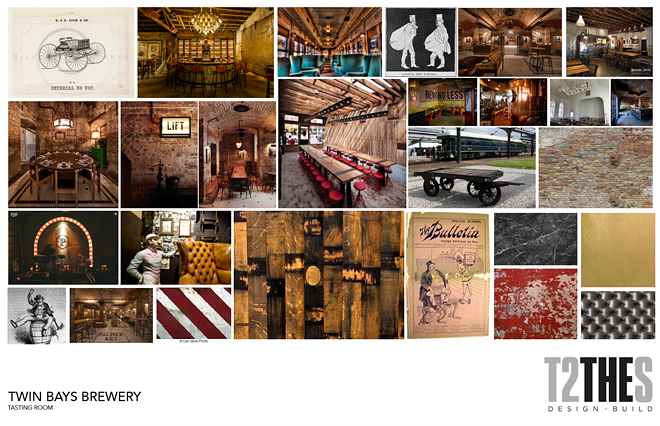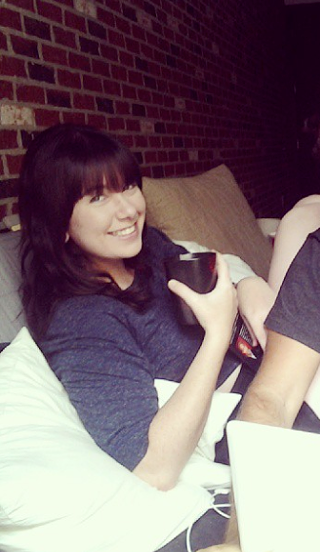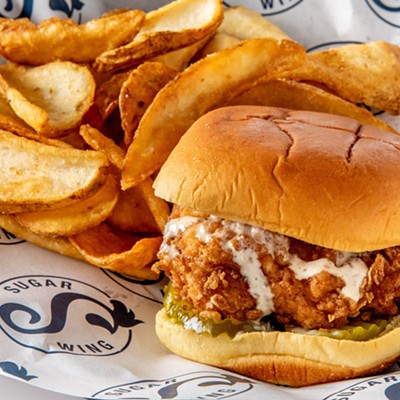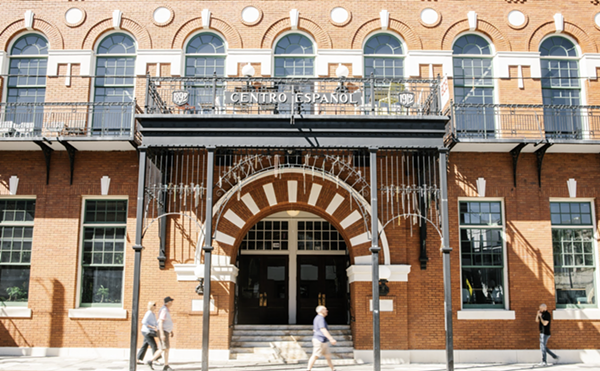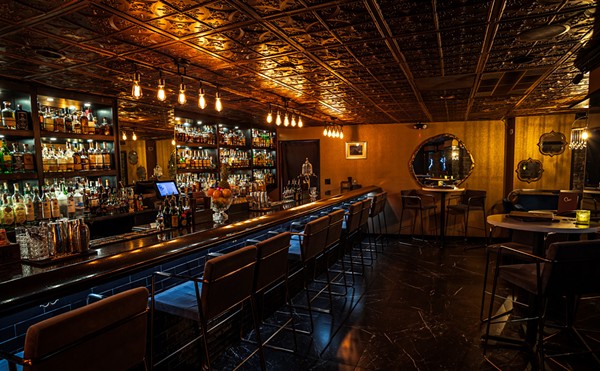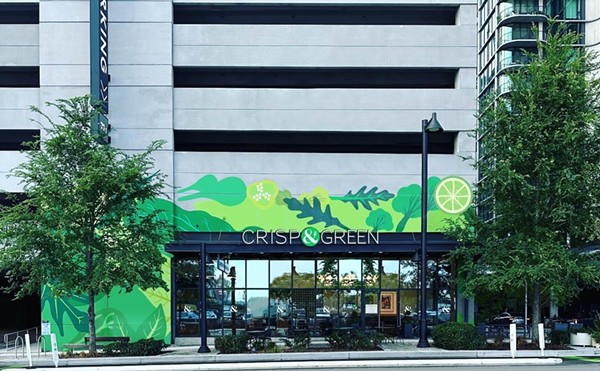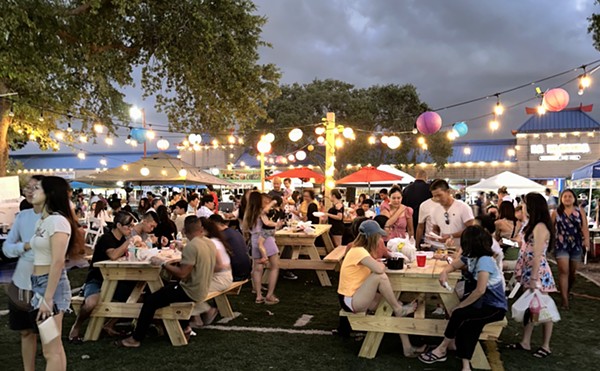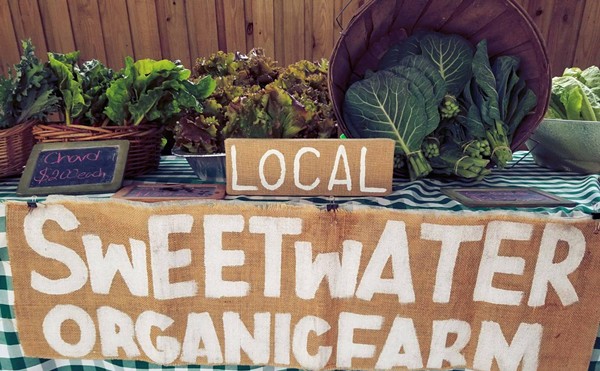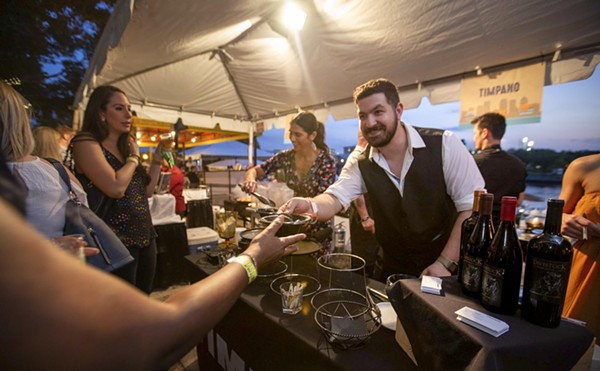
What makes craft beer “local” is typically the people behind the pint — what they put in it, how close they open a microbrewery to your house. But that’s about the extent of it, says master brewer Aaron Barth, who’s part of a new St. Petersburg brewery called Twin Bays alongside founder Brenden Markopoulos. Soon, the Pinellas-born owners intend to take local a step further with a one-of-a-kind project set to accompany their brewhouse and taproom: a hydroponic hop farm.
Located on Twin Bays Brewing’s large — and I mean large — piece of property at 3201 39th Ave. N., the 11,000-square-foot hydroponic greenhouse will produce 4,462 plants or so for about 10,000 pounds of fresh state-grown hops every three months, upping Florida beer’s hometown appeal.
“If you think about your beer, it’s like what’s local about your beer? Your hops are usually grown somewhere else. Your malt is from somewhere else. Usually it’s been the people who make the beer and work in the brewery — that’s local,” said Barth, previously the head brewer for Florida Avenue Brewing Co. “So by giving breweries these hops and letting them use ’em, it makes it a much more local product.”
Twin Bays — whose name has nothing to do with Tampa Bay, Boca Ciega Bay or anyone’s bae and everything to do with the twin-bay hopper cars originally developed during the Great Depression to transport grain — aims to use a small amount of its hops in-house, and then sell the rest commercially. More than a year in the making, the 30-barrel brewery has reached out to folks like Colin Clark of Colorado’s Hydro Hop Farms, whom they plan to consult during their first plant, and the University of Florida’s Institute of Food and Agricultural Sciences. The institute’s Wimauma and Apopka facilities are testing how well multiple species of hops grow here, and they’re helping Twin Bays with questions that come up along the way.
But why hasn’t the hop industry taken off in the Sunshine State like it has in, say, the Pacific Northwest?
According to Markopoulos, who says they’ll be the third hydroponic hop farm in the nation, the crop is traditionally grown in three states — Oregon, Washington and Idaho — because of their ideal latitudes. With Twin Bays’s hop-eration, however, proximity to the equator doesn't matter. A greenhouse allows them to skip the risk involved with conventional in-ground growing — disease, for example; create a different flavor profile than dried and stabilized hops; stand out in a beer market that’s becoming increasingly saturated; and supply other breweries with the hops they need year-round.
“Kind of the idea behind it was there’s always hop shortages... so what we’re trying to do is sell patches of hops that these breweries need for their staple beers that they cannot get traditionally,” said Markopoulos, a former marketing and sales ringer for Fortune 500 companies.
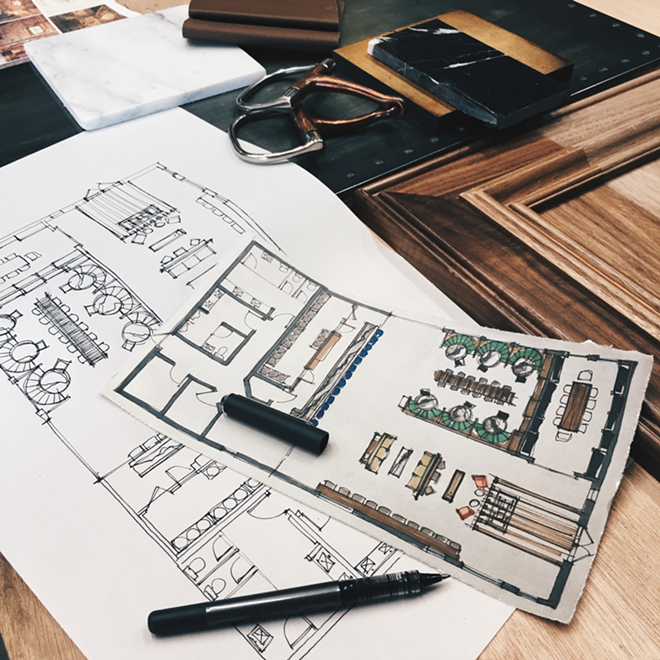
An outdoor beer garden-style “hop garden,” where patrons can enjoy their beers at picnic tables among hop vines growing naturally, will help the brewery differentiate themselves as well. To make way for the garden, around 19,000 pounds of invasive Brazilian pepper trees were removed, and the duo imagines an average visit to Twin Bays going something like this:
Pull up to property (the old location of a roofing supply company that seems more secluded than it actually is, but the brewery, shooting for an all-around immersive experience, likes it that way) and park. Walk into the 3,000-square-foot tasting room, showcasing 14 taps, a nitro and a cask, plus a pre-Prohibition train theme complete with design elements such as sloped ceilings and distressed wood. Grab a beer and check out the 24,000-square-foot brewhouse, visible through the taproom’s floor-to-ceiling storefront glass, or head outside for a closer look inside the temperature-controlled barrel room, which Barth will use to work barrel-aging and barrel-fermentation magic. And finally, stroll over to the hop garden or greenhouse, whose bays will each spotlight a different hop variety (more than likely) and feature a window and plaquer that notes what’s growing and who the crop’s for.
Phew. There’s a lot going on, and that’s not including the extra nuggets the owners have in store — a retrofitted outdoor stage for high-occupancy live concerts from big-name acts like Florida Georgia Line; a quieter version of a train horn that sounds whenever one rolls down the railroad track behind the building, signaling to patrons that $3 drafts are available until the cars pass; and possibly a community garden, to name a few.
“But with the hops, that’s kind of like our golden egg of sorts,” Markopoulos said.
Back when Twin Bays was going with a marina theme and scoping out a location near St. Pete’s Maximo Marina (and Harborage Marina after that), Markopoulos posted an ad on ProBrewer.com, a network for the industry, to find a head brewer. As he tells it, he looked at several applications, but only brought one person back — Barth.
Playing around on a 15-gallon pilot system on-site until their launch in December or January (though the greenhouse will open before then), Barth says he aims to have all 14 taps filled in time for the grand opening. The beer list, loaded with a little bit of everything, will offer what the brewery can sell out, as well as four core beers, an IPA and maybe a cream ale among them.
“I don’t really want to focus on one style of beer. I want to hit the entire spectrum so that anybody who comes here can get a beer,” Barth said. “We’re gonna be doing everything from your Bud Light alternative all the way up to the funky sours, barrel-aged, everything.”
After all, distribution of the core four and building a brand outside Florida is the idea.
“You’re either doing your small-scale local brewery where you’re bringing people into your taproom, or you’re trying to do that and produce a ton of beer to distribute,” Markopoulos said. “My plan and Aaron’s plan is to create a national brand. We’re not trying to just stay in our box.”

